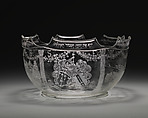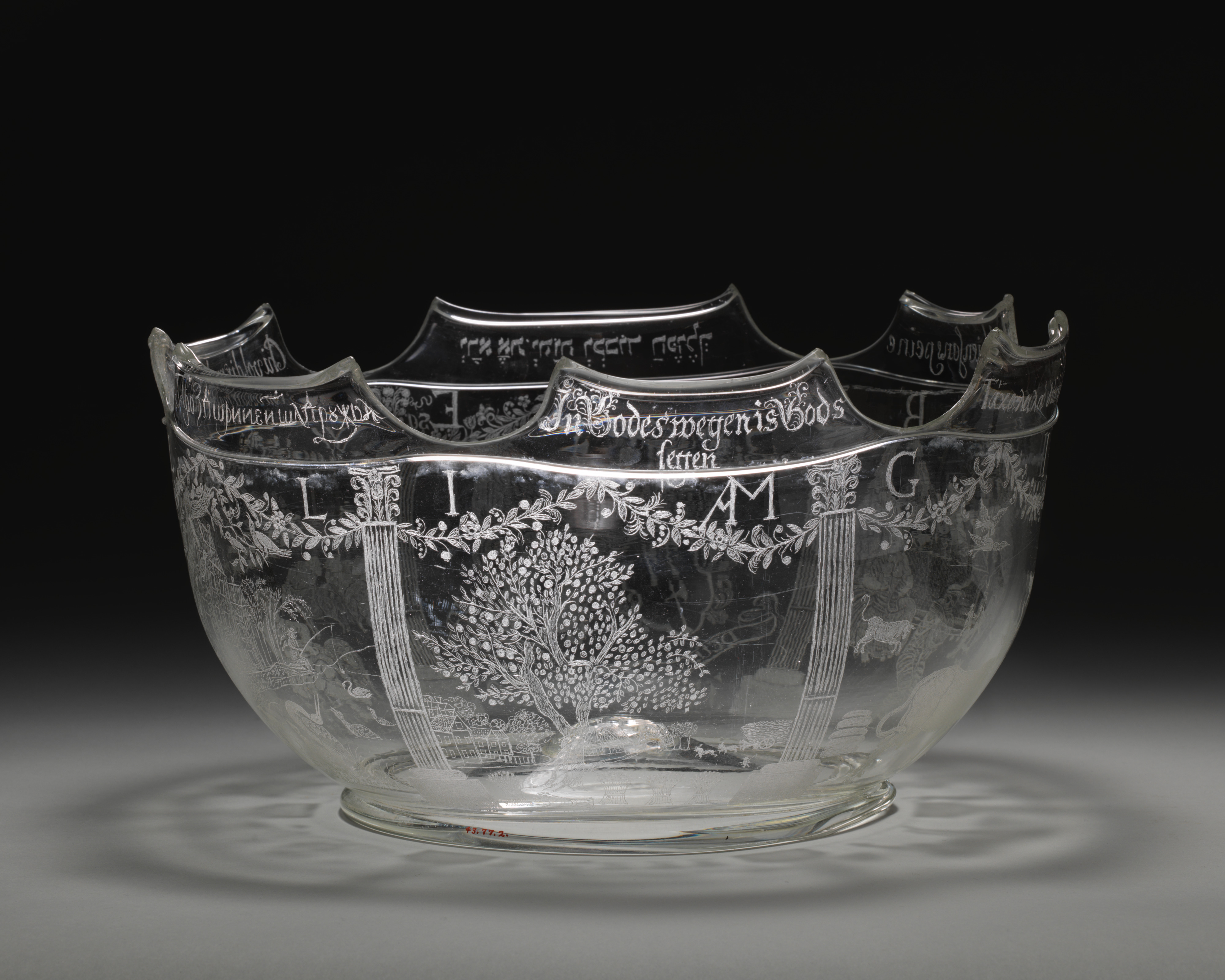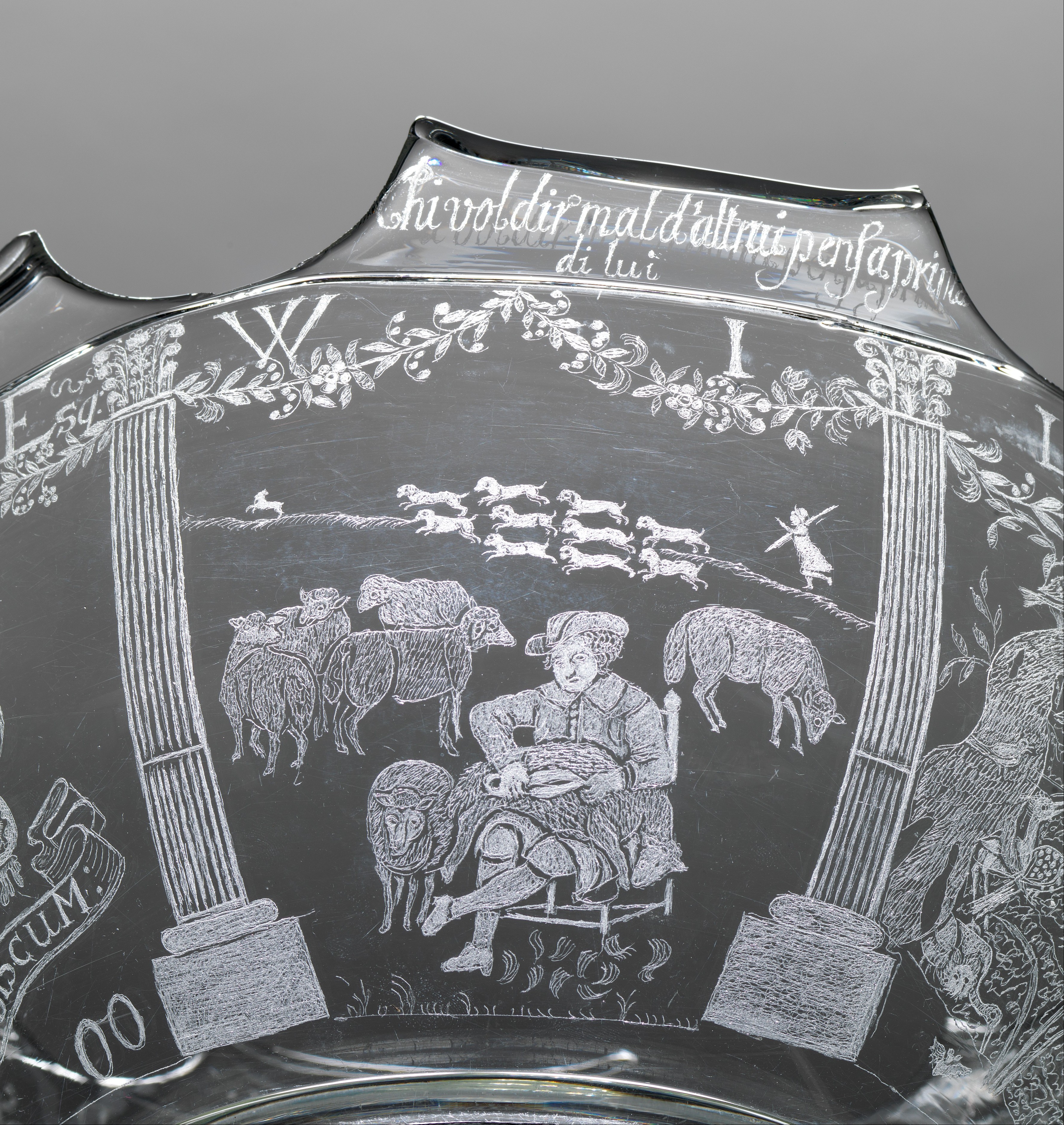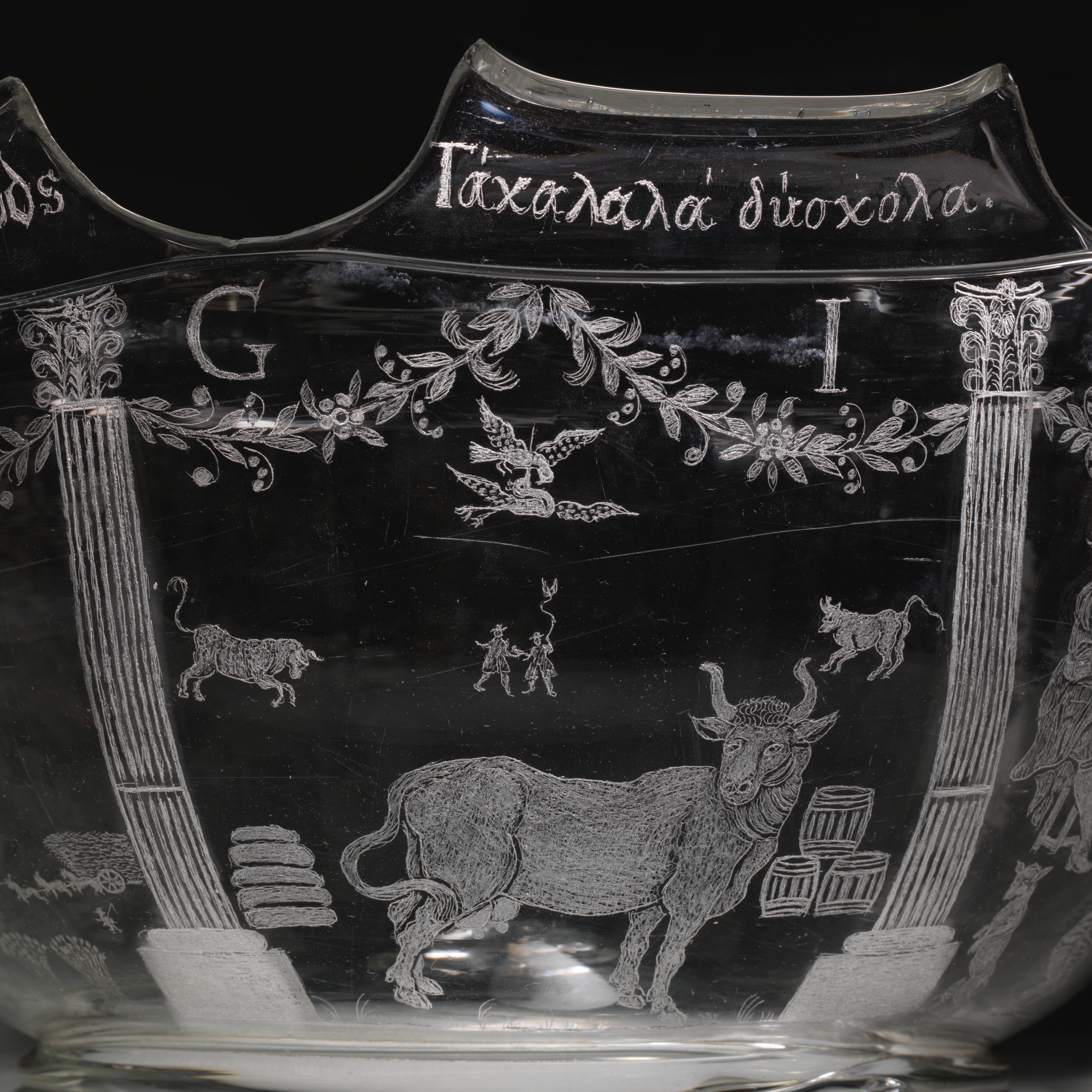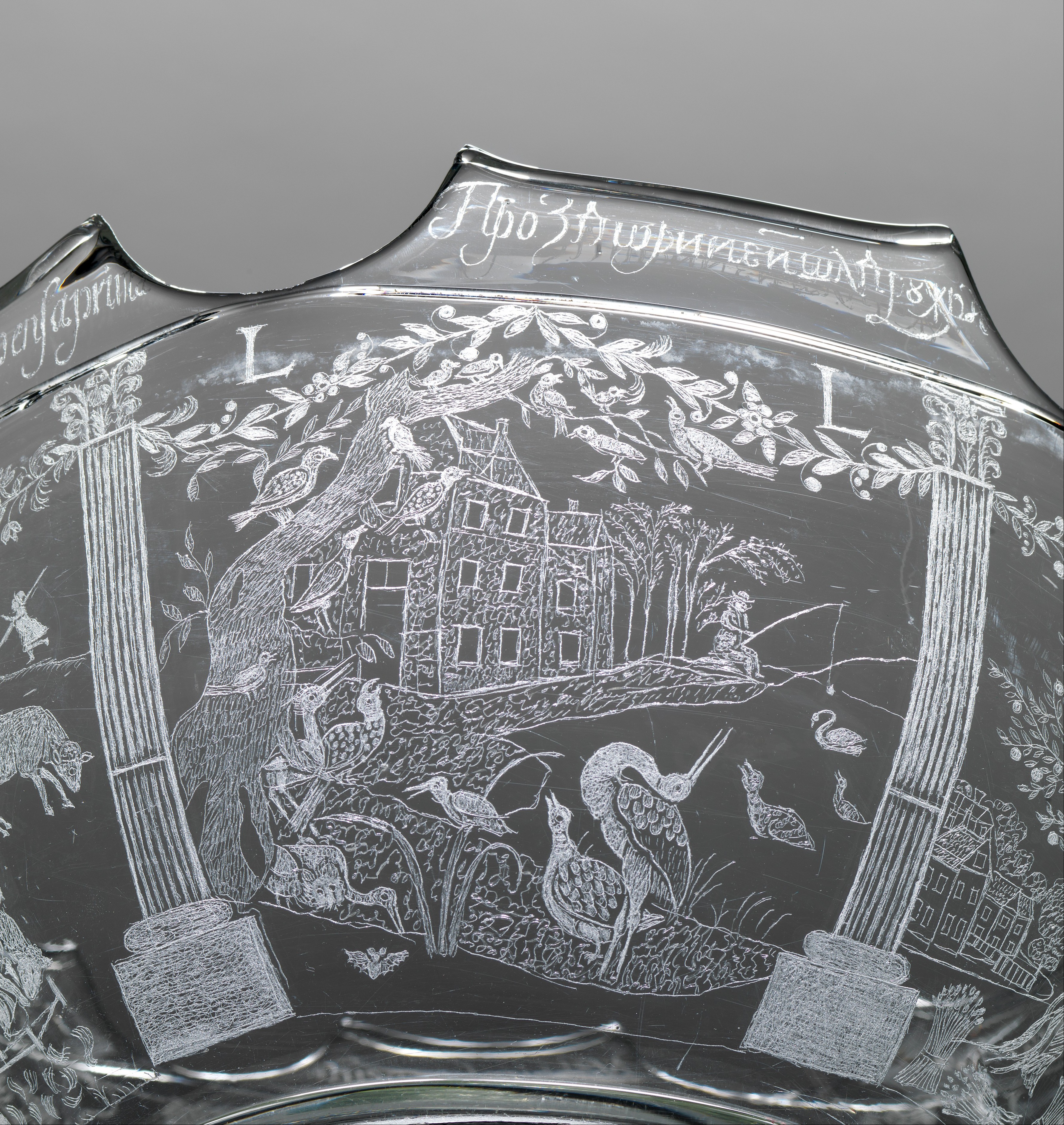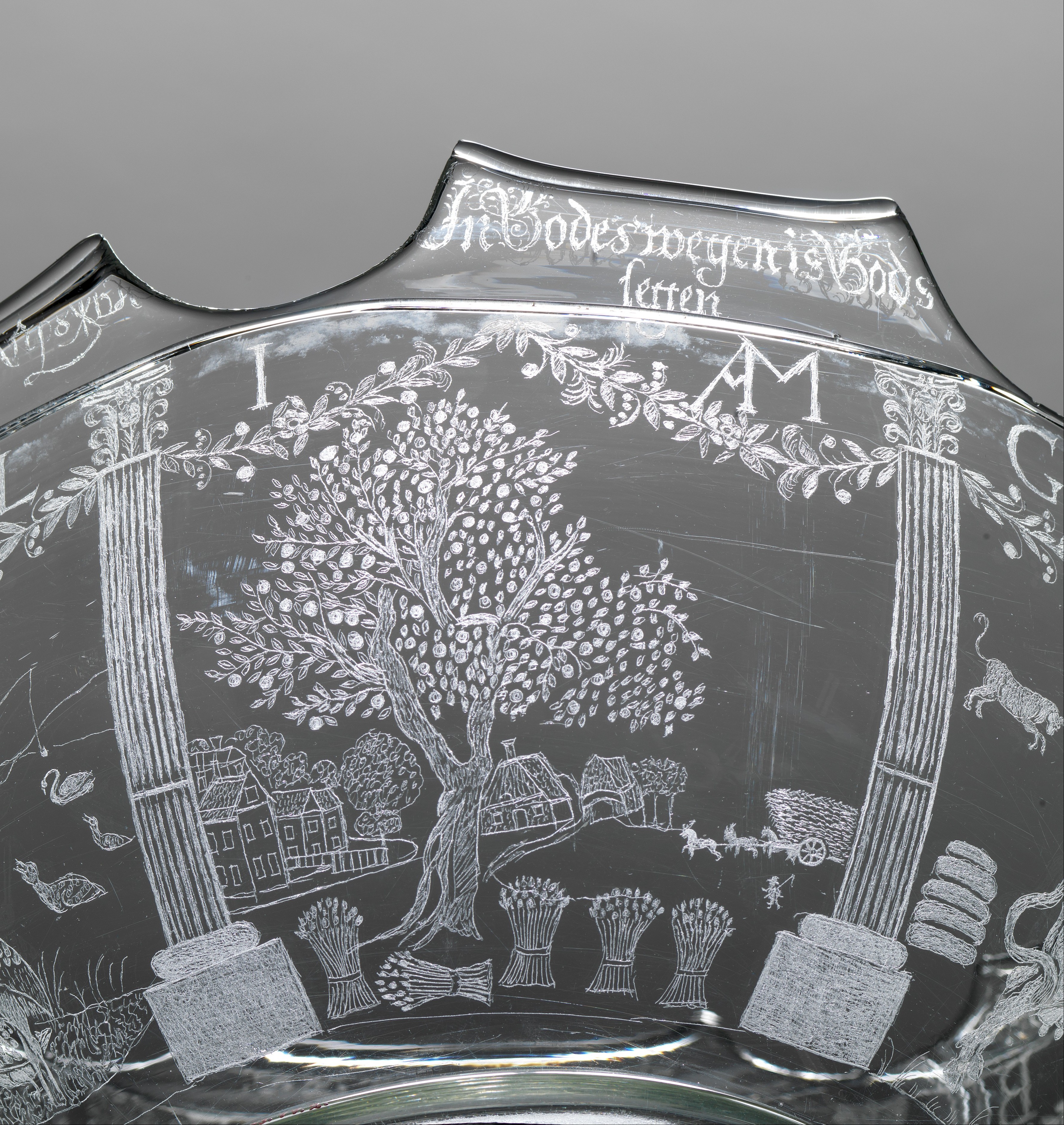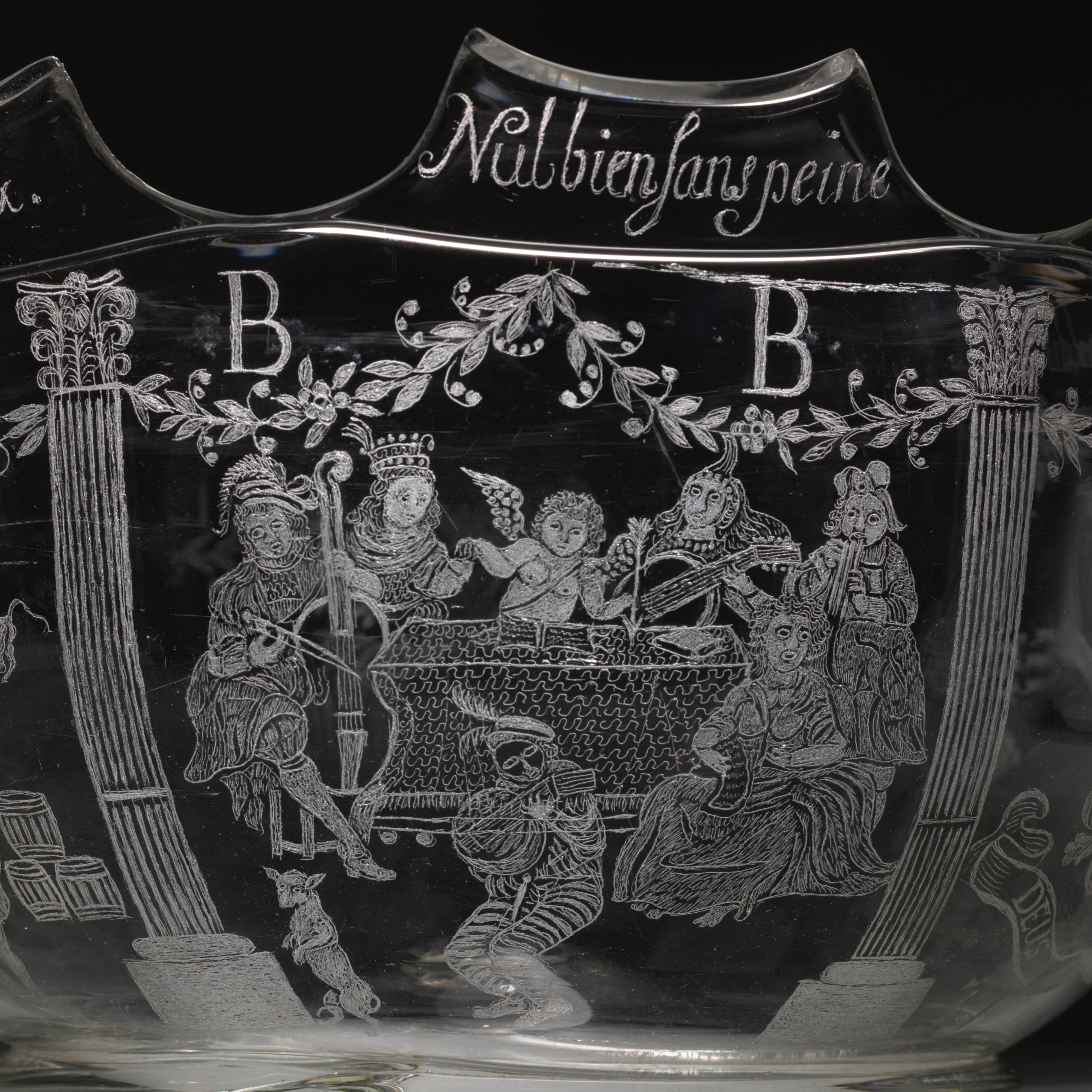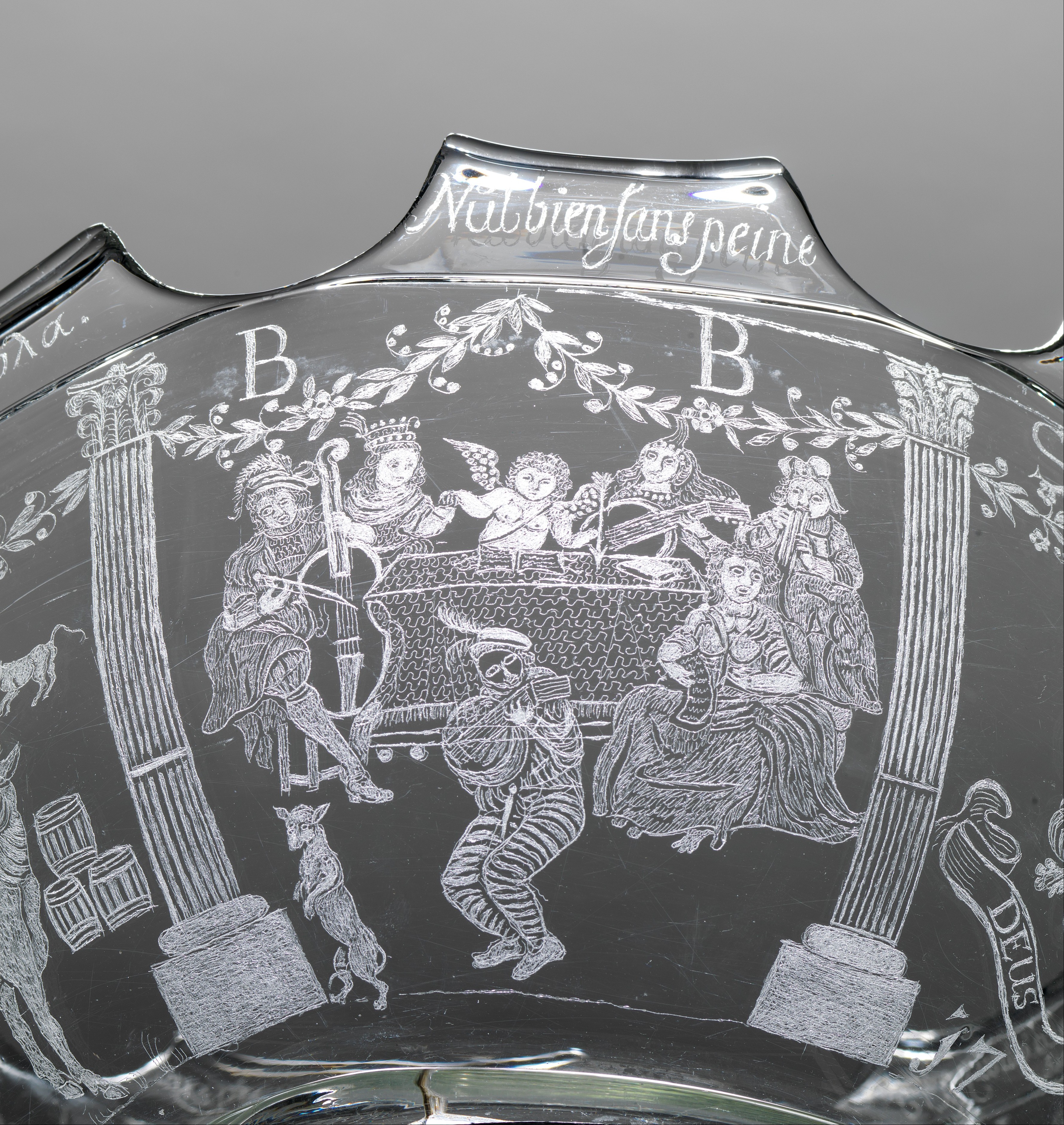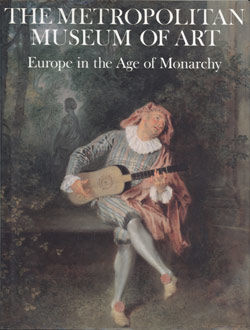Monteith with the Gibbs and Nelthorpe coats of arms
Monteiths, filled with ice water, were used to cool wineglasses, which were suspended in the water by the foot held in the notches of the rim. At the time this piece was made, monteiths were primarily of silver; thus this rare example is an unusually large object to be found in glass. The piece was engraved (with a diamond point) with the arms commemorating the marriage of William Gibbs of Horsley Park, Essex, and the heiress Mary Nelthorpe and inscribed with the name of the groom. Around the rim are moralizing inscriptions in Italian, Hebrew, Slavonic, Dutch, French, and Greek (such as "Fear God and honor the King" in the main panel). Cupid sitting between the bride and groom sings from a songbook while musicians assembled around a table play the lute, viol da gamba, and recorder. Other panels are engraved with scenes of country pursuits, such as harvesting and fishing. This monteith is the Museum's earliest example of flint glass, which was perfected in the late seventeenth century in England, where it immediately became the preferred material, having equal strength but greater inner "fire," or luminosity, than the Venetian and German imports.
Due to rights restrictions, this image cannot be enlarged, viewed at full screen, or downloaded.
This artwork is meant to be viewed from right to left. Scroll left to view more.
